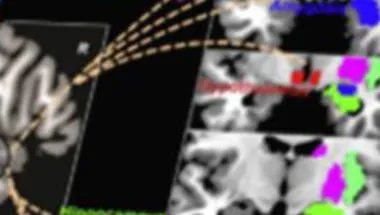
Catherine Spilling
Post Doctoral Research Associate
Biography
I studied biological sciences (Psychology) at the University of Edinburgh before working as an assistant psychologist at the Royal Hospital for Sick Children in Edinburgh and St James’ Hospital in Leeds. In 2012, I returned to study and completed an MSc in Brain imaging (Neuropsychology) at Nottingham University (2013) and a PhD at St George’s University of London (SGUL) in 2018. My PhD focused on characterising brain morphology and function in Chronic Obstructive Pulmonary Disease (COPD). Following on from my PhD, I worked as a post-doctoral image analyst at SGUL where I continued my COPD research and developed image analysis strategies for a novel advanced diffusion imaging techniques known as Quasi-diffusion magnetic resonance imaging (QDI).
In 2021, I joined the institute of Psychology, Psychiatry and Neurosciences at King’s College London as a Postdoctoral Research Associate on the Neurocognitive signatures predicting risk of recurrent depression (NESPRED) project. This project will involve predictive modelling of recurrence of major depressive disorder using neuroimaging and cognitive markers.
Research Interests
- Neuroimaging of psychiatric and neurological disease
- Diffusion magnetic resonance imaging
- Biomarkers in psychiatric disorders
- Major Depressive Disorder
Research Groups
- Neurocognitive signatures predicting risk of recurrent depression (NESPRED) study
- Centre for Affective Disorders,
- Department of psychological medicine
- School of Academic Psychiatry
- Institute of Psychiatry, Psychology and Neuroscience
Key Publications
- Barrick et al., (2020). Quasi-diffusion magnetic resonance imaging (QDI): a fast, high b-value diffusion imaging technique. Neuroimage.
- Spilling et al., (2019). Disruption of white matter connectivity in chronic obstructive pulmonary disease. PloS One.
- Spilling et al., (2019). Contributions of cardiovascular risk and smoking to chronic obstructive pulmonary disease (COPD)-related changes in brain structure and function. International Journal of COPD.
- Spilling et al., (2017). White matter lesions characterise brain involvement in moderate to severe chronic obstructive pulmonary disease, but cerebral atrophy does not. BMC Pulmonary Medicine.
Research

Neurocognitive signatures predicting risk of recurrent depression (NESPRED) study
After recovering from depression, it is currently difficult to advise on the risk of future recurring episodes. The aim of this study is to find better ways to predict the risk of future depressive episodes for a particular person
Research

Neurocognitive signatures predicting risk of recurrent depression (NESPRED) study
After recovering from depression, it is currently difficult to advise on the risk of future recurring episodes. The aim of this study is to find better ways to predict the risk of future depressive episodes for a particular person
